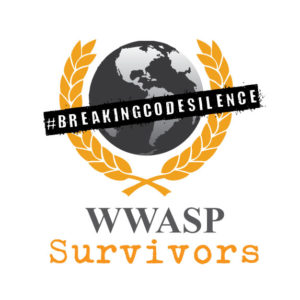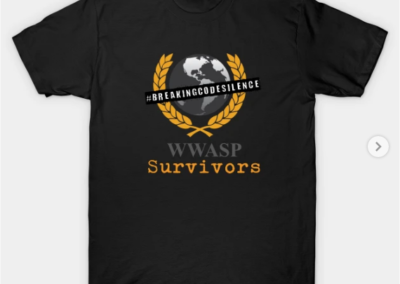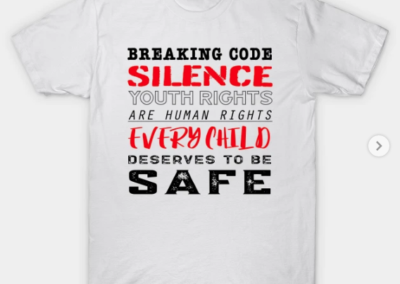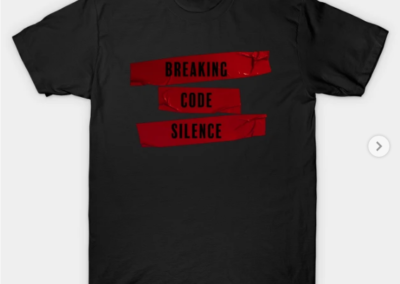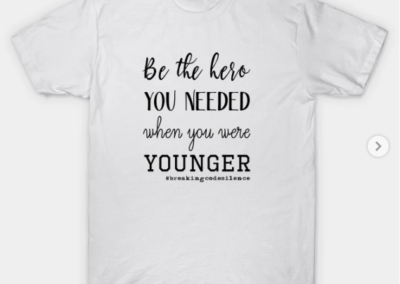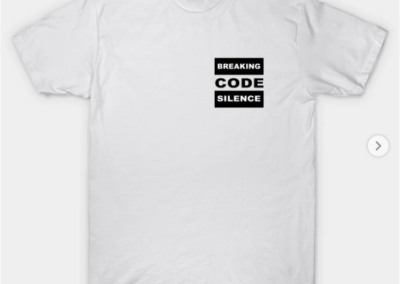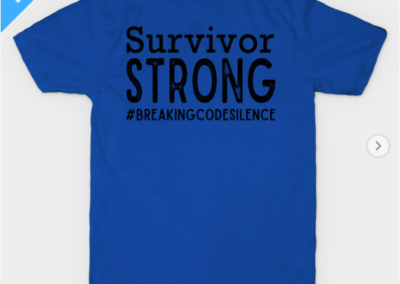In this post we will review Dr Stuart Grassian’s testimony. Dr. Grassian is an expert witness specializing in the area of solitary confinement. He has an extensive work history including a history of being a director of two psychiatric hospitals for troubled adults and adolescents.
The doctor’s strongest area of expertise was the psychiatric effects of solitary confinement. He explains how he got started in the that particular subject and the history of solitary confinement.
Q. What are your strongest areas of expertise in the forensic field?
A. My strongest area that I’m pretty well known in is the psychiatric effects of solitary confinement. I’ve also been pretty actively involved in evaluation of people who have been sexually abused and victims of sexual trauma.
Q. All right. Let’s talk about the psychiatric effects of solitary confinement with your work. How did you become interested in that field?
A. I think like most things in life, pretty randomly. A friend of mine from college had become head of the Massachusetts Correctional Legal Services and was involved in a class action lawsuit at the maximum security institution in Massachusetts at Walpole. And the class action lawsuit was against the use of solitary confinement strictly. He asked me to evaluate inmates. And I was actually pretty skeptical. And he said, don’t worry. I’ll pay for the day, and you see what you find. And I said, okay, under those circumstances. Well, I evaluated inmates for one day and I was absolutely shocked. First of all, they weren’t exaggerating. These guys were scared. They were so sick. They were scared of it. And the other thing about it is, they were all sick in a similar kind of way that was different from what you see
in ordinary clinical practice. So I just–I was amazed. And what I did then is I went to the Harvard Countway Library and did some medical literature review and discovered there’s this huge body of literature on this issue. It goes all the way back to the beginning of the 1800s.
A. So I discovered this huge body of literature. I mean, a description ofbthousands of cases of solitary confinement psychosis. And they all had, quote, unquote, a particular stamp, which is exactly the same thing I had seen. It turned out that doing this literature review, it’s amazing history. Solitary confinement was introduced to the world in modern times by the Americans, and it was by the Quakers, by Ben Franklin and the Quakers.
Q. (By Ms. Timmins) Based on your research when you first initially stepped into this subject, you found that there was a long history of solitary confinement in America?
A. There was a long history of it, but more importantly there was an extensive body of literature describing the effects. And the system was widely used in the early 1800s and was a catastrophe. People were dying. People were becomingpsychotic. And it even led to the United States Supreme Court in 1890 absolutely condemning it in a case I had mentioned to you, the case of Mr. Medley.
Q. So how long have you spent working in this field of the psychiatric effects of solitary confinement?
A. My initial day at Walpole was, I think, in 1979. The publication was in, I think, 1983, and since then I’ve been involved and evaluated many hundreds of people in conditions of solitary confinement, juvenile detention facilities, immigration detention facilities, a whole host of situations.
The doctor was given some of the background of the case and offered general effects of solitary confinement in his testimony.
Q. In this particular case, you were asked to offer an opinion, a general opinion, about the psychiatric effects of confinement on juveniles; is that right?
A. Yes.
Q. You’ve been provided some general background of the case, but your testimony here today is generally the effects of solitary confinement; correct?
A. That’s my understanding
Q. All right. Can you tell us just in a succinct manner what is solitary confinement?
A. Well, solitary confinement is the confinement of an individual generally alone in a relatively small cell. Now, typically the cell is about 80 or 90 square feet. Typically, it has a window to the outside world, which is very often a vertical window. That’s most typical. Several inches wide but high. It sometimes looks out on pleasant things. It often looks out on kind of really not much of anything. There’s also a door which is usually a sliding metal door with a window in it to the tier. Inside the cell the person generally will have some sort of bedframe, which is either metal or a concrete platform on which they place a bed or mattress, and they of course have bedding. And they have a sink and toilet combination. Very often they’ll have a little shelf desk kind of thing, pretty small, but you can use it as a desk, and some kind of stool, which can be as bad as like a concrete stool. There’re sometimes a little bit more pleasant than that. Usually–and things vary–usually the individual will have at least some access to a little bit of radio or TV, or at least the audio of TV, not a lot but some. They have books. Often that also is restricted but not entirely prohibited. They still have contact with family by phone and by visit, but it’s restricted. Like, with family visits, they are usually non-contact, so you can’t really hug your dad or whatever. So you’re just talking through a wire mesh or actually even Plexiglas. And as I said, they have phone privileges as well, but they’re restricted equally. People are allowed out of their cells usually for an hour a day for some sort of exercise yard. In a good place there will be both an indoor and outdoor one because, obviously, there are times when the weather is too inclement to go outdoors. Usually the exercise yard–when they’re in the exercise yard, usually by themselves. But some of these exercise yards are like chain link, sort of dog-run looking things. So you can talk to the inmate adjacent to you pretty easily, you know, through the chain link fence. Again, all of this can vary from place to place.
Q. What you’ve just described, is that typically what you see when you are looking at solitary confinement in a prison system?
A. That’s what you generally see in an adult prison system. And again, I mean, there are variations in all of this. I’m giving you sort of a typical example.
Q. I think sometimes as a layperson when we hear the term solitary confinement
that means that they’re locked in a little dark cell and never have contact with
anyone. There are no stimuli. There’s nothing else. That’s not the real world of that?
A. It’s not. No, that’s not realistic. Usually–and again, this varies–but usually the inmates can communicate with each other. Sometimes they have to press their mouth against the gap in the sliding steel door. Sometimes they talk through the vents to each other. They also, if you happen to see this on TV, they have this kiting where they actually can slip something out, and another guy can catch it like catching a fishing line and pull in paper or whatever. So they have very ingenious ways to communicate with each other. That’s not to say that this is ordinary levels of
communication. It’s still difficult. But you find–you know, people do find ways to play a game of chess with somebody they can’t see, you know, but they can call out the numbers, or whatever, the place on the board. But you know, it’s very isolated. It’s not entirely isolated. And of course, in these facilities you also have somebody make rounds. You have a staff person bringing them meals three times a day. So there are those kinds of contacts as well. And as I said, they have visits with attorneys, with families, and with counselors who generally will bring them out of their cells for some of the time.
The difference between solitary confinement in detention facilities or jail and quiet rooms in psychiatric hospitals. Reading through this, remember this one fact: Children in OSS were not spoken to for hours and would often have to wait for someone to notice them on camera to even shift positions.
A. Well, the term quiet room is a term that my understanding is used in psychiatric hospitals. I mean, I’ve used a quiet room with patients. So I’m not aware aware of it being used in any sort of more punitive type of setting. But a quiet room is a place where– you know, if you have a patient who is really agitated and out of control, sometimes you’ll use actually a physical restraint to hold the person down, try to talk to them, try to calm them down. Sometimes they need some time just to–you know, some space. So you put them in a quiet room by themselves, but there’s somebody right outside trying to connect with them, trying to talk to them, trying to calm them down. And, you know, the expectation is that they’ll be there for– until they can calm down, like fifteen minutes or a half hour, couple hours at the most. You know, it’s all an attempt at helping the person gain control of himself. So there’s a real therapeutic feel to it.
On whether “quiet rooms” are ever used as a punishment.
Q. In your training and experience, are those types of rooms used as punitive measures?
A. Never.
Q. As a punishment?
A. No, no. You never use that as punishment
Dr Grassian had experience with quiet rooms and felt an obligation sa a psychiatrist to stay there and try to just keep talking to the patient.
A. But, you know, if the person was in the quiet room, I usually felt it was my obligation for myself as the psychiatrist to stay there and just to keep trying to talk to the patient.
On whether people are ever put into these quiet rooms in hospitals for days, weeks or months.
Q. And when would they get out?
A. I mean, typically you get–most typically within a half hour, a couple hours at most.
Q. Are these quiet rooms within your field, within your profession, are these quiet rooms to be used for days, weeks, months?
A. Oh, no. That would never happen.
Per Dr Grassian, children are particularly vulnerable in connection to solitary confinement and he explains why. Children’s brains are not able to handle solitary confinement and they see functional changes to the brain. This is something that is not disputed at this point in the medical field
Q. Do children have particularn vulnerabilities in connection with solitary confinement?
A. Yes.
Q. What is that?
A. One of the things that happens in solitary confinement is that the person becomes less capable of processing their emotions. They’re under a lot of stress, so their emotions become exaggerated,nintensified, the negative emotions: fear, anger, you know, whatever, agitation. And because of the lack of adequate levels of stimulation, they’re not fully alert. And you know what happens when people aren’t fully alert? They’re just wild and impulsive. They can’t think. They’re thinking at all. So you put a person in that condition, and if they started out being kind of out of control, they’re going to get more out of control. That’s pretty predictable. Adolescents are exceptionally vulnerable to this. As anyone who has been an adolescent or has had a kid who’s an adolscent knows, adolescence is a time when emotions are super-intense. These kids are superexcitable, super–their emotions are over the top, and yet their ability to manage emotions, to think, to quiet, to choose behaviors, is very limited. The emotional intensity of the limbic system, it gets to its height maybe around early adolescence, like 13, 14, that kind of thing. And yet the frontal lobes, the ability to modulate all of that doesn’t really fully develop until you’re about 25, and that’s under good circumstances. Imagine a kid who is all stressed out, a kid who comes from a very stressful environment, a kid who’s placed in solitary confinement in a very stressful environment. They’re just not going to be able to develop those controls, that frontal lobe inhibition of the more primitive, you know, emotional centers of the brain, the limbic system, the amygdala, whatever.
Q. What you’re saying, is this based on your experience? Is this based on research? Where does this come from?
A. At this point, it’s based on so many things. It’s kind of–no one can really argue it. You can’t really argue it any longer. I mean, of course it’s based on my clinical experience, whether as a clinician in a psychiatric hospital or in forensic work. But there has been a lot of brain research recently. As many of you may be aware, there has been a lot of new technologies that have allowed people to actually look at the functioning of the brain. Not just at structures, but its actual functioning. It has demonstrated the effects ofn stress. It has demonstrated how the brain actually continues developing. You know, they actually have pictures of brains as they develop over the years and shows how the frontal lobes develop late, and these deeper centers, the more primitive centers develop early. I mean, they’re tremendous colored pictures. I can’t tell you I could explain the technology that’s used but it’s called functional MRI.
Q. Are you saying if someone is–if a juvenile, especially, is placed in solitary confinement for an extended period of time that can cause actual, physical changes to their brain?
A. Well, a functional MRI shows functional changes. But there have also been studies that have demonstrated structural changes. During this period of development, during any development of the brain, any development period, especially adolescence which is huge, the brain is plastic. I mean, neural connections form, they break off, they die, there’s pruning, making things work better. And when that process goes awry, you actually can see overt structural changes in the brain, especially in a part of the brain called the hippocampus, which is involved in the processing of memory, of emotion. And the hippocampus actually shrivels, it shrinks over time, and adolescent brains are particularly vulnerable.
The emotional effects of juveniles who are kept in solitary confinement are more intense than those of an adult. You could potentially impair a child’s ability to ever function normally since they are so
Q. What kind of emotional effects do you see from juveniles who are kept in solitary confinement for extended periods of time?
A. Well, what you see in juveniles you also see, though, of course to a less dramatic extent, with adults. And maybe the best description was one that– I’ve always been impressed by what somebody said about this phenomenon. The person was Elaine Ward who was the warden of an adult maximum security institution for females in New York State. And what she noticed and couldn’t understand was this phenomenon she described as maxing out. Once a person–the person might have been doing okay, but then they get into solitary for something and they never get out, because their behavior worsens over time while they’re in solitary And I mean, you give her all the credit in the world because she was upset about it; she was worried about it. She didn’t understand it. She didn’t know what to do with it. But she saw it. And that’s what you see in all levels. You see it with adults, and you see it tremendously in juveniles. The incidence of mental illness, the incidence of trauma in juveniles is so high. So you have this vulnerable population because of their histories, and then you have the vulnerable population because of their age. And you put them in these conditions that are going to make it worse. And, I mean, their tremendous fear is that you’re going to impair that kid’s ability to ever function normally as an adult.
The doctor goes over confinement rooms in juvenile facilities.
Q. Now, you had brought up a lot of these juveniles in these types of facilities that do have confinement rooms or something like that have mental health histories or traumatic backgrounds. That increases the effect that solitary confinement has?
A. Oh, yes. Absolutely. I mean, that has been demonstrated over and over in research studies. Moreover, as you can well imagine, it’s those kids who are the most traumatized, kids with histories of mental illness, kids also with histories of cognitive impairment, these are the kids who are least capable of controlling their behavior and are most likely to end up in solitary confinement. So you know, you’re just taking the most vulnerable of the most vulnerable, and you put them in conditions which are going to make it worse.
Q. How quickly can you see the effects occur on someone in solitary confinement?
A. Well, first of all I think the effects are–I mean, the beginning of the effect is almost immeidate because there’s fear. There’s fear and rage, you know, when a person is placed in solitary. One of the more dramatic ones I saw was a person who developed a florid, overt delirium and attempted suicide within hours of being in solitary. And this was an adult. So I mean, it can take you very quickly.
The rate of suicide attempts and self-harm in facilities that use solitary confinement are pretty high. Much higher than adult facilities.
Q. You had brought up before the suicide attempts and things like that. Do you see through the research and your training and experience, do you see that there are higher rates of self-harming–
A. Yes.
Q. –in situations like this?
A. Yes. I mean, that has been studied both in juvenile facilities and in adult facilities. And the statistics are pretty horrendous. They’re worse in juvenile facilities. I don’t remember the statistic, but I do know what it is in adults. In the adult prisons, 5 percent of population is in solitary. 50 percent of the suicides are in solitary. And self-mutilations are roughly the same percentage. And of course, you have about 5 percent in solitary and I think it’s like 50-odd percent of all self-mutilations occur among that 5 percent. So it’s horrendous, and it’s worse in juveniles but I don’t remember the statistic on that.
In dealing with out of control people, Dr Grassian has experience with troubled people in psychiatric hospitals and while they might have to use restraints, they found that they never really had much trouble by being caring and respectful. The effects of when children are in an over-control facility and how that affects their behavior.
A. If a juvenile or anyone is out of control, it is critically important that the situation become safe, and that the person, the inmate, the child, feel safe. So like when I talk about physical restraint, you know, where I’m actually holding somebody down, and not by myself Of course, you know, you’ll have four people doing it. The only thing you’re always careful to do is you never hurt the person. You just have enough power that you can just keep them down, and then you talk to them calmly. It’s the same thing when you put them in a quiet room. You never let that person experience it as something frightening or evil. You let them know that you care about them, that you’re trying to help them. And that’s what works. I mean, it does work. I’ve had patients, kids, who been in juvenile detention in solitary confinement, and they come to my psychiatric hospital and I don’t have security. I don’t have any big, strong people to hold them down. All I have is respect and concern. We never have
trouble, never. You know, I’ve been to prisons where they say, oh, you can’t see this person in the same room; they’re much too dangerous; they’re going to kill you, or whatever. And we just say, we’ll take that risk and, literally, never have we
had a problem, never. And that’s hundreds of cases.
Q. Are you saying then a lot of times the–when we’re talking about juveniles, the way that the adults are acting or reacting to the juvenile is also what can exacerbate the situation?
A. That is correct. In adult facilities for adults, but it’s so much more correct for juveniles.
Q. What is an over-control facility?
A. Well, an over-control facility is one where– It becomes a real problem when you really see your job as: I’m going to be in control of this situation. Because what you end up doing is you end up humiliating, enraging, and frightening the person you’re doing this to. And what do you think is going to happen? The person is going to get more out of control. He’s going to become more enraged, more terrified, more agitated. That’s what happens.
When dealing with children, it’s better to approach the feelings behind the behavior and not try to focus on the behavior itself. That’s what Dr Grassian found usually works best.
Q. Now, doctor, you’re not saying that we should just allow children to do
whatever they please?
A.Well, as I said, you know, you might be surprised that in a locked psychiatric unit for adolescents, you are seeing a lot of the same kids who might end up in juvenile detention or whatever. You’re seeing the–you’re really seeing the same population but you’re dealing with it very differently. And it’s really dramatic, it’s really striking, to see how much better they do in the psychiatric hospital, you know. It’s just that whole different attiude, an attitude based on trying to understand what’s going on. After all, whatever the behavior is that’s troubling, there’s something behing it. There are feelings. There’s something leading to it. And if you care about that, and you try to figure it out with the kid, that kid is going to feel safe. He may hopefully gain some insight into what’s setting him off. You know, it’s not that hard once you have that concept that it’s not all: I’m going to be in control. But rather, I care about you.
A strictly controlled environment will probably decreases the likelihood of successful adjustment after the person leaves that environment. This has been demonstrated in research.
Q. In a facility where environment is strictly controlled, will it increase the likelihood of disruptive behavior?
A. It does increase the likelihood of disruptive behavior, and probably even more importantly, it decreases the likelihood of a successful adjustment after the person leaves that environment. That has been demonstrated also in research.
Someone who claims to be using cognitive behavioral therapy in connection to control rooms doesn’t have an understanding of what cognitive behavioral therapy is. If you read the previous transcripts, Ben Trane told authorities that was what he was doing with OSS.
Q. How does the use of cognitive behavioral therapy in connection with control rooms, quiet rooms, how do those two interplay, or do they?
A. Well, first of all, a person who says that they’re using cognitive behavioral therapy with someone who is out of control in a quiet room, it doesn’t- I mean, that sort of demonstrates a lack of understanding of what cognitive behavioral therapy is. There’s a difference in– Let me Just as a background say there’s a difference between cognitive behavioral therapy and another form of therapy, another form of behavioral therapy called aversive conditioning. Cognitive behavioral therapy is based on the notion that a person is thinking, and they have a lot of negative thoughts about themselves or about their situation, and their negative thoughts are irrational, they may come from childhood or earlier experience, traumatic experience. And because they have those negative, not pertinent thoughts they act upon them in counterproductive ways. To give you an example, I have a patient who is an adolescent, and she avoids doing her homework. She doesn’t study for her tests. She has gotten better. I mean, I’ve been with her for a long time. But you know, why does she engage in this negative behavior? She does because as we’ve come to understand, she’s super-anxious, she has a lot of self-doubt. And you know, if you never try then you can’t fail kind of thing, you know? So she just never tried. And we explored some of the origins of that. I don’t want to get into too much detail, but there was some family stuff that was contributing to that feeling of not being good enough. And as she was able to identify the negative thinking, it helped her to change the behavior. But this is a girl who thinks. She spends a lot of time thinking. She’s actually a wonderful–you know, I met her when she was 13, and she was a wonderful conversationalist with adults. She was terrible with kids. But, you know, with adults because she was such a thinker, an internalized kind of person. You could really have that conversation. Now, for her, you know, if you look at what was needed, you had cognitive behavioral therapy, understanding the negative cognitions. You had expressive therapy, which is understanding the origins. Where do these bad cognitions come from? And there’s also medication to help quiet her anxiety. And the combination of the three has–I mean, it has been years, but she’s doing so much better. So that’s cognitive behavioral therapy. It has no relevance to people who are acting out of control. It doesn’t apply. I mean, people who are out of control, they’re not thinking. They don’t have a lot of negative cognitions to deal with. I mean, it’s silly. It’s a misrepresentation of what cognitive behavioral therapy is.
The doctor explains that using a control room – like OSS – as punishment would be aversion therapy which is no longer used for ethical reasons. The idea of putting someone in solitary confinement to punish them is unethical.
Q. So what is the aversive therapy?
A. Well, what they’re really doing is something called aversive conditioning. And first of all, aversive conditioning is very controversial, and I think it’s basically no longer being used whatsoever. But aversive conditioning, the paradigm is this: you take a very specific negative behavior, very specific, not like, oh, you didn’t follow the rules today. No, its got to be really very specific, and you punish it almost immediately. And the punishment should last no more than a few seconds. So the typical thing would be like a shock. You know, the kid would wear something, or an adult, and they’d get shocked, and so somebody is watching. So you have the behavior leading to punishment like that (indicating by snapping fingers), and you have lots and lots of opportunities to change that specific behavior. So it’s very specific, very short-lived punishment,very immediate. So putting somebody in solitary confinement has nothing to do with any of that. Even the people who are advocates for aversive conditioning would never attempt to justify using aversive–calling that aversive conditioning. It’s not. And it’s not going to be useful. So a person who says, oh, I’m a strict behaviorist and, you know, I do this. They don’t know what they’re talking about. I don’t want to be disrespectful, but they don’t know what they are talking about. That’s not what its about.
The doctor has been the director of two inpatient psychiatric units for adults and adolescents. He goes over what happens if staff members are not properly trained. According to him, sadism and sadistic behaviors naturally develop on the part of the staff without training.
Q. And what is seen in facilities that do have locked rooms? What is seen in those types of facilities when they don’t have trained staff or educated staff, or people who know how to work with others with emotional issues?
A. Well, I mean, there’s a lot of sadism that occurs in those facilities. I use to falsely condemn the individuals who worked in the facilities, you know, thinking they were sadistic. But I don’t believe that anymore. I think that the environment creates this sadistic response, because you have behavior that’ s out of control and irrational, and if the only thing you’re supposed to do is control it–but you can’t, because the more you try to control it, the more out of control it gets. You know, you as a staff member are going to feel humiliated. You’re going to feel afraid, and you’re going to feelrage because of the humiliation. And so your tendency is to become over-controlling and sadistic. So I think the sadism that one sees in these situations is really a product of the system itself. And it’s not that there aren’t decent people who go into these places and work. I mean, and actually I’ve treated officers who’ve working in these types of facilities and seen the enormous pressure that they’re under that leads them to sadistic responses. And, you know, it’s sad to see that.
The doctor have never seen a place where the other patients or students were policing each other like they were expected to do in Midwest Academy.
Q. Have you ever come across a facility where it’s the juveniles or the other patients or students who are assisting in policing their own peers?
A. I know you had mentioned this to me when we spoke last night. And I told you, I’ve never in my entire professional life ever heard of that. I just cannot imagine any justification for it.
Dr Grassian cannot describe students being expected to hold physical positions as nothing short of sadism.
Q. In your experience, have you seen situations where there were expectations of physical positions to be held while sitting in a control room or quiet room?
A. In all of my experience, including evaluating people who are in the notorious Tehran prison, Evin Prison, I have never seen that at all, zero, never. I mean, to me I can’t think of how to describe that except as sadism.
Being locked in a room without books, school, or stimuli is worse than a supermax facility for adults. Having the lights on at all times and speakers blaring music or noise would be sensory deprivation in a way – it’s deprivation of meaningful stmuli. It adds to the toxicity of the solitary confinement.
Q. What about if there’s no stimuli provided to a juvenile while they’re in one of these locked rooms, no books, no school, nothing like that? What does that do?
A. Again, I mean, first of all, you’re describing a situation that is more onerous, harsher, more toxic than what you would typically see in a maximum security, or even a supermax facility for adults. It’s just–it’s beyond. I mean, there’s nothing to maintain a child’s alertness. There’s nothing to distract him from negative thoughts. I mean, it’s an enormously toxic situation, as is, by the way, keeping lights on in a cell for twenty-three hours or twenty-four hours a day. I mean, that’s been condemned widely. What you do is you have a light on during the day so that the person can read or whatever, write letters, whatever they’re doing, and then there should be a separate night light, because you need to be able to look inside to make sure everything is okay, but you also need to let the person sleep. So you know, something like an orange-colored night light type thing.
Q. Would that be considered more of a forced stimuli, to have lights on all the time, if you have speakers blaring music or some type of annoying noise, something like that?
A. Yes. That’s a very good question. We used to call this thing sensory deprivation. But it’s not actually sensory deprivation. It’s deprivation of meaningful, anchoring perceptual stimuli. If you have white noise, if you have lights on all day long, you have noxious stimulation. And it has been well known that if you add noxious stimulation to a situation of stimulus deprivation, things will get worse. In fact, this has been done by folks like the British in trying to break down suspected IRA terrorists. It was actually done at Guantanamo, using superair- conditioning where it was very cold in the cells. It was done using very, very loud fans, all these things as ways of adding to the toxicity of the solitary confinement.
Food isn’t used to incentivize people to behave in solitary confinement. According to Dr Grassian, if they were going to respond to cause and effect, they wouldn’t be in solitary in the first place.
Q. Now, you understand, and I’m sure you hear sometimes, that if you make conditions miserable enough for someone,they may just change their behavior and not do what it was that got them in there in the first place?
A. In general, a person who is able to respond to cause and effect so well is a person who will probably never need to be in solitary in the first place. You know, the reality is that adults and the children, the juveniles, you see in these situations are people who aren’t that calm and calculating. Their behavior is not based on an anticipation of its likely consequences. It’s based upon what they’re feeling right there now, which often leads to very negative consequences in a lot of different ways.
Children who are prescibed medication for ADHD, bipolar disorder, depression, etc are the most vulnerable and should not be exposed to solitary confinement.
Q. And how do children on prescription medications for depression, ADHD, bipolar, those kinds of things, how is that effective if a child like that is in solitary confinement?
A. As I said–or I’d don’t know if I actually said this–if you look at the incidence of mental illness in the population in general, and then you compare it with the incidence of mental illness in adult prisons, it’s higher in adult prisons, and it’s much higher still in solitary confinement in adult prisons than it is in the adult prison general population. And this is even much more true in juvenile detention facilities where–and, again, I just don’t have the stastic right in front of me. But we’re talking about histories of mental illness and/or traumatic background and/or cognitive impairment–significant cognitive impairment. If I remember correctly, I think it’s in the range of 65 to 70 percent of all the kids have those kind of histories. I mean, it’s huge. It’s huge. And, of course, the fact that they have these mental disorders will, in fact, be reflected hopefully in their being on some medication to try to quiet it down. Those individuals are the most vulnerable of all.
The general consensus of psychological and psychiatric associations as well as the United Nations is to condemn solitary confinement – especially in juveniles. The reason why the medical profession in particular have condemned it is because it’s harmful to children.
Q. What is the general consensus of the medical profession on the use of solitary confinement with juveniles?
A. The American Psychological Association, the American Psychiatric Association, the American Academy of Child and Adolescent Psychiatry, even the–I forget what it’s called –the Committee of Correctional Physicians, all condemn solitary confinement, and especially with juveniles. It has been condemned by the United Nations. It has been eliminated–well, solitary confinement itself has been eliminated in many European countries but certainly with juveniles that has been eliminated. It has been condemned.
Q. And with the medical profession in particular, they have come out with these positions because, in your opinion and in the profession’s opinion, it’s harmful to the physical, mental, and emotional states of juveniles; correct?
A. Yes. And as I said, there has been such an influx, so much more research that has been done on these issues, especially as technologies have evolved, that at this point you really can’t argue against it. I mean, there is no argument against those propositions.
Full Dr. Stuart Grassian Testimony

